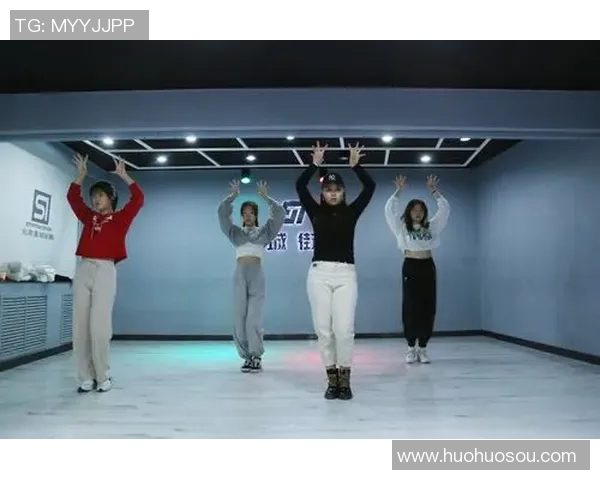本文围绕南京街舞队的意识形态进行对比研究,并分析其对舞蹈文化发展的影响。通过对不同街舞队在理念、风格、传承和创新等方面的深入探讨,揭示了街舞作为一种文化现象在当代社会中的多重意义与价值。在此基础上,文章进一步探讨了这些意识形态如何塑造街舞文化的发展路径,以及它们在促进社会交往和文化交流方面所起到的重要作用。最终,本文希望能够为理解南京地区街舞文化的演变提供一个全新的视角,同时也为相关领域的研究提供理论支持。
1、意识形态的定义与背景
意识形态是指一系列思想观念体系,它影响着人们对世界的认知与行为方式。在南京街舞队中,不同团队由于成员背景、创始理念及地域文化差异,形成了各自独特的意识形态。这些意识形态不仅反映了团队内部成员的共同价值观,还体现了他们对外界文化的接受程度和反应方式。
例如,一些以传统舞蹈元素融合现代街舞风格为特色的团队,其核心理念强调的是对本土文化的继承与发扬;而更多受西方流行文化影响较大的团队,则可能更注重个人表现与技术炫耀,这种差异使得各个团队在艺术追求上存在明显分歧。
因此,研究这些不同意识形态背后的原因,不仅有助于我们理解南京街舞队伍的发展历程,也为探索更广泛的社会现象提供了重要线索。
2、不同意识形态下的艺术表现
Nanjing 的 street dance teams under different ideological systems display diverse artistic expressions. Some teams prioritize traditional cultural elements, integrating local folklore and history into their performances. This not only showcases the unique charm of Nanjing's culture but also instills a sense of pride among team members.
On the other hand, certain teams are more inclined towards contemporary styles, focusing on technical proficiency and visual impact. They often draw inspiration from international trends, leading to a fusion of various dance forms that cater to a broader audience. Such differences in artistic emphasis result in varied performance styles, reflecting the underlying ideologies that shape each team's identity.
The exploration of these artistic expressions reveals how ideology influences creative choices, ultimately affecting the overall landscape of street dance culture in Nanjing.
3、传承与创新之间的平衡
在街舞的发展过程中,传承与创新是一对重要关系。许多南京街舞队在保持传统元素时,又积极探索新的表现形式,以适应时代的发展需求。这种平衡不仅能够吸引新一代年轻人参与,还能确保优秀传统得到有效传承。
例如,有些团队会定期举办工作坊,将传统民族民间舞蹈融入到现代街舞教学中。这种做法既保留了历史根基,又让必一运动B-Sports年轻人在活泼自由的氛围中学习到丰富多样的技能。同时,通过这种互动,他们也能更加理解和珍视自己的文化遗产。

然而,在追求创新时,也需要警惕过度商业化的问题。一旦忽视传统内涵,仅仅追求外部形式上的新颖性,很可能导致作品失去深刻性。因此,各个团队必须在这两者之间找到合适的位置,以推动整体文化向前发展。
4、社会交流中的角色
Nanjing's street dance teams play an important role in social interaction and community building. Through competitions and showcases, they create platforms for dancers from different backgrounds to come together, share experiences, and learn from one another. Such interactions foster a sense of belonging and promote cultural exchange among participants.
The presence of street dance events also attracts audiences from various age groups and social strata, enhancing public awareness of this vibrant art form. This visibility helps break down stereotypes associated with street dance, allowing it to be appreciated as a legitimate form of artistic expression rather than merely entertainment.
This aspect highlights how the ideological differences within street dance teams contribute to richer social dynamics within the community. By serving as intermediaries between cultures and promoting inclusivity, these teams significantly influence the development trajectory of Nanjing’s dance culture.
总结:
通过对南京街舞队意识形态进行深入研究,我们可以清晰地看到,不同理念如何塑造了各自独特的艺术风格与表达方式。这不仅反映出每个团队对于自身身份认同及使命感的追求,更揭示出他们在传承与创新之间所进行的重要探索。同时,这些差异也促成了丰富多元的社区互动,为推动当地乃至全国范围内的新兴艺术形式奠定了坚实基础。
未来,对于南京街舞以及其他地方类似文化现象的发展,我们需要不断关注并尊重其多样性。在全球化日益加深的大背景下,唯有包容并欣赏不同思想观念之间的碰撞,才能实现更具活力和创造力的发展路径,从而推动整个城市乃至国家层面的文化繁荣进程。